In past weeks on The All Worlds Traveller, we’ve looked at daguerreotype-style portraits from the Auxientia steampunk fantasy role-playing game. (For those just joining, Auxientia is a live action role-playing game co-created by Nathan Pease, Hilary Dirks Norton, and Steve Townshend in 2019, with events in 2022 and 2023.) So far, our series has included Officer Prescott (Deana Vazquez) and Robert Irons (John Kidd). This week, we add Maren Tinker, played by Meredith White. In our regular Photography section, we’ll look at how we resolved specular reflections in Maren’s spectacular spectacles.
Daughter of the CEO of Auxientia’s biggest steam tech company, Luciole LTD., Maren Tinker was a child prodigy who invented a revolutionary communication device that made her a star at the age of nine. Her fortunes began to fall when the company exploited her invention. Later, a factory bombing injured Maren and her mother, who stepped down from her role as CEO, diminishing the family’s influence within Auxientia’s largest corporation.
Photography
I made a daguerreotype-style photograph for Meredith, as well as a color retouch. Meredith did her own makeup, including the scar tissue on her cheek from the aforementioned factory bombing.


Light
I chose a large softbox for the Auxientia portraiture. I chose it for story and setting reasons. A window works like a large softbox, and a large softbox works like a window. It’s big, it’s square, and the light that comes through the window (and the softbox) and is distributed across the surface of the window (or softbox); it’s not the bare, concentrated, bright light of the sun (or flash bulb). Since steampunk adopts the set dressing of a nineteenth-century world, indoor photography would use window light the way painters did. Thus, the large, square softbox that imitates window light was my choice for this portraiture.
Reflection
In the portrait we made together at the Gala of Everlasting Change last fall, I added shining overlays onto Meredith to emphasize her nature as a brilliant summer fey. This time, we wanted to take away reflection.
Every photographer fights with reflection at some point. Lights bounce against shiny surfaces that reflect light right back at the camera. Sometimes they can be good for the composition—like when a steel blade catches the light along an edge that would otherwise have been lost in shadow. Other times, they can be a plague!
Reflections in eyeglasses are one of the nuisances that photographers often have to deal with in headshot sessions. They’re a challenge because the reflections are usually bright enough that toning them down won’t recover the detail underneath. Those reflections can be big enough that you can’t replace what’s underneath them in Photoshop (when it’s the client’s eye). Reflections in costume eyeglasses seem to be worse because they don’t have the anti-reflective coating that most prescription eyeglasses carry. The best way to knock out reflections in eyeglasses is not to have reflections in the first place.
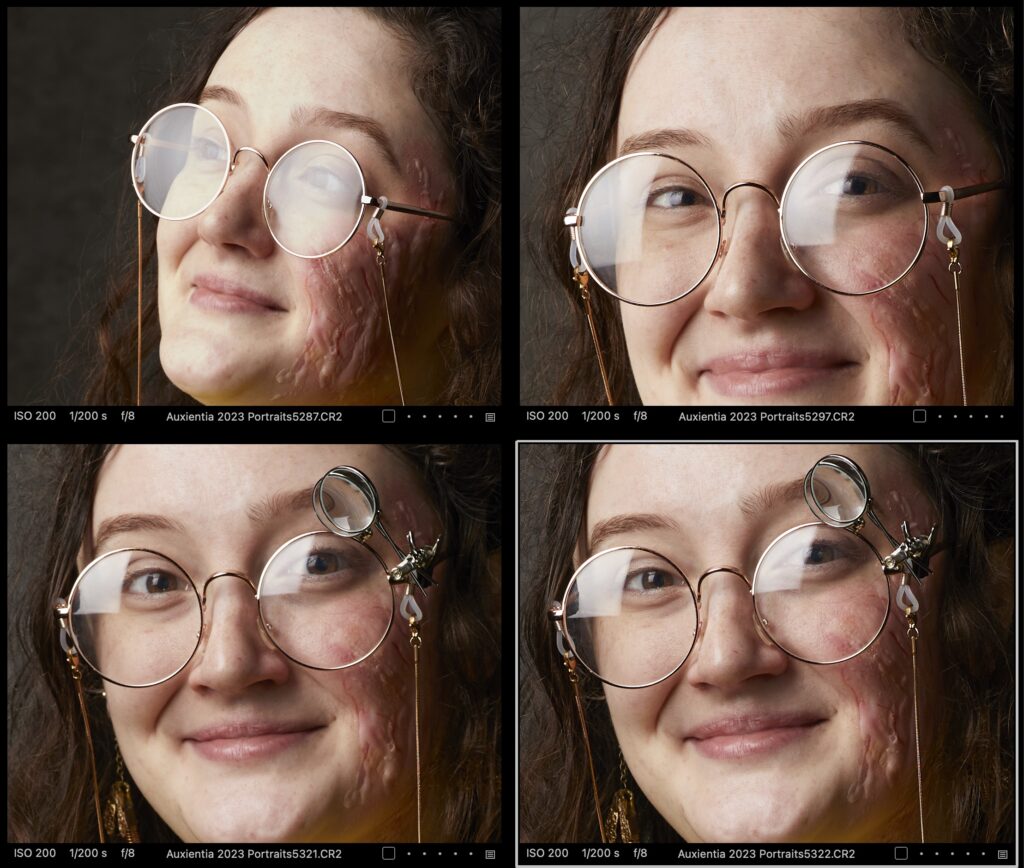
Knocking Out Reflections
The fastest way to knock out reflections in eyeglasses is to change the angle of your light. For instance, I find that raising the light slightly can often move the reflection out of the glasses. You can also change the angle of your subject. Then again, if you’re being very deliberate about your portraiture lighting and the patterns of light and shadow it creates, you may not want to move the light at all. In that case, flagging the light works best—which is to say, blocking the light from hitting the reflective surface. This can be done any number of creative ways, using strips of black material held by an assistant or a stand.
In our case, we flagged the light by having Meredith do a pose where the character is adjusting the eyeglasses with the hand closest to the light. This way, the hand blocks the light as part of the pose.
Another way to knock out reflections is to use a circular polarizer filter. I have one of these in my bag, but it’s made for a smaller lens than the beautiful 85 mm lens I use to photograph portraiture. I have a step-up ring that allows the polarizer to be placed upon the lens, but since the ring and polarizer are smaller, a vignette forms around the edges of the image. Also, the polarizer cuts the light by a stop. Finally, I haven’t always achieved great results with it. Unless I have infinite time to fiddle with it, it stays in my bag.
Endless Testing
I am grateful for Meredith’s patience as we shot around the reflections, testing this, testing that. This was certainly the biggest technical challenge of Auxientia’s 2023 portrait sessions. Eventually, we got the shots we needed, and we made these beautiful photographs of Maren Tinker for Meredith.
Finally, an un-retouched shot from the middle of the session where we defeated the reflections by removing the eyeglasses altogether!
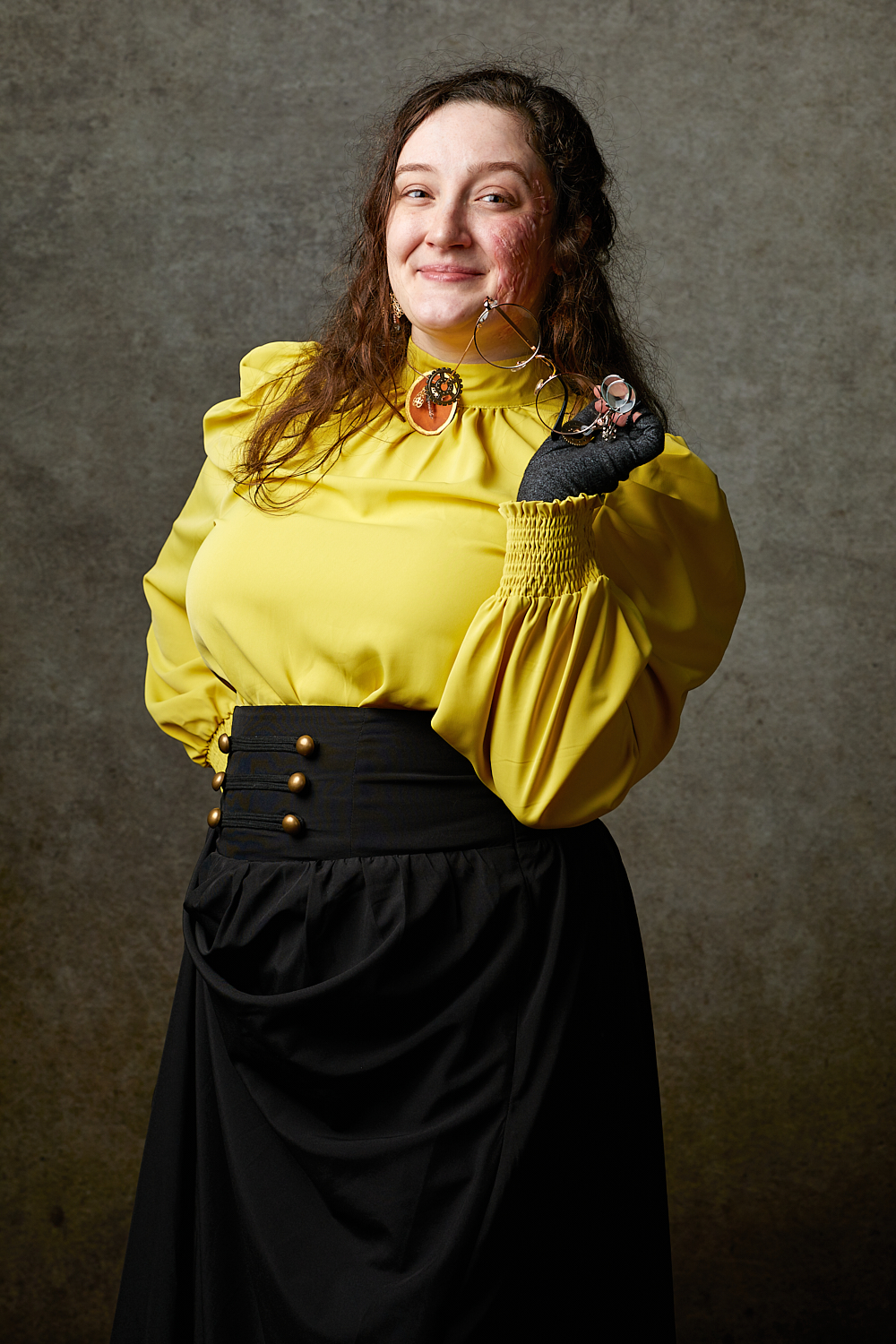
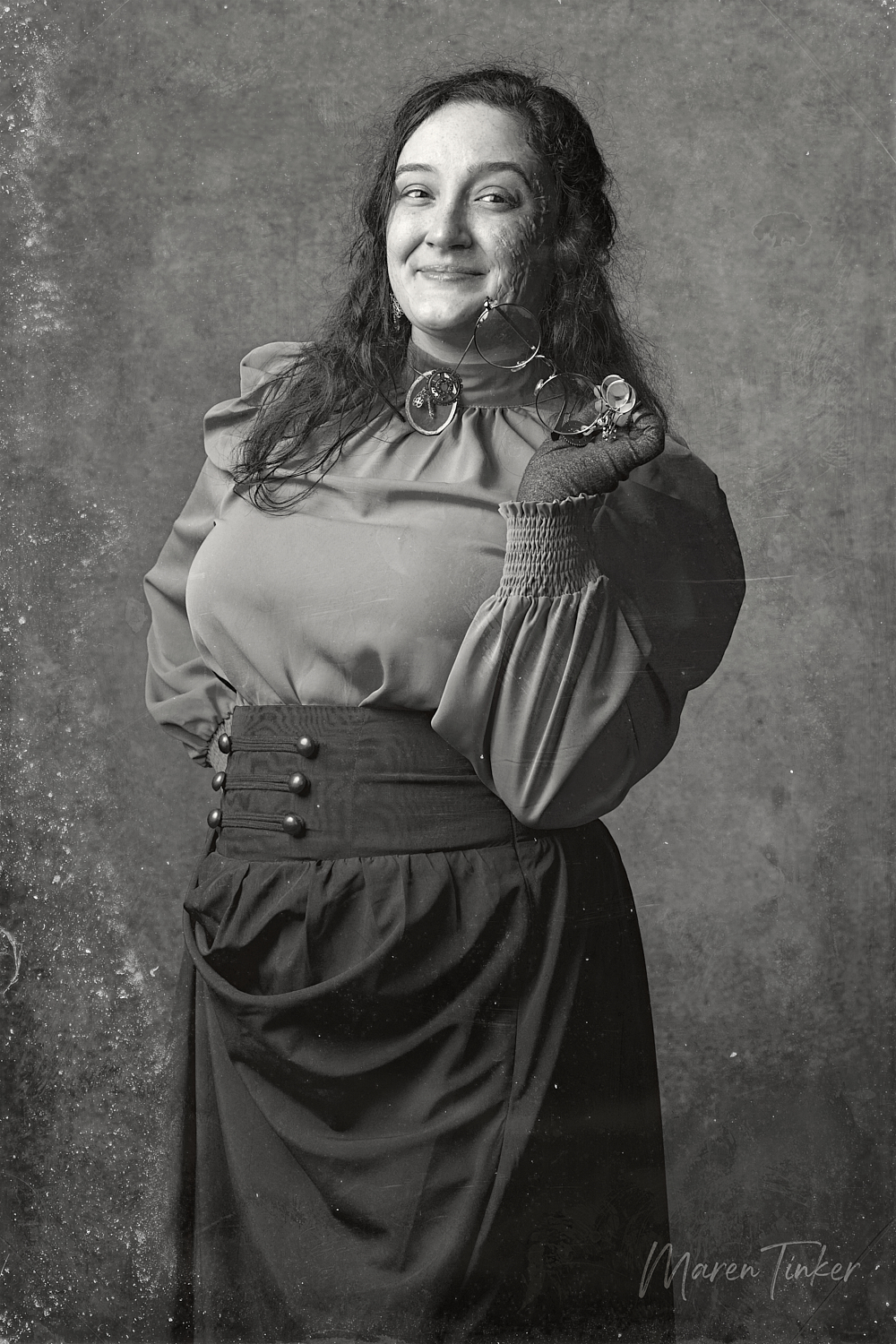
Textures and daguerreotype style are from Chris Spooner!


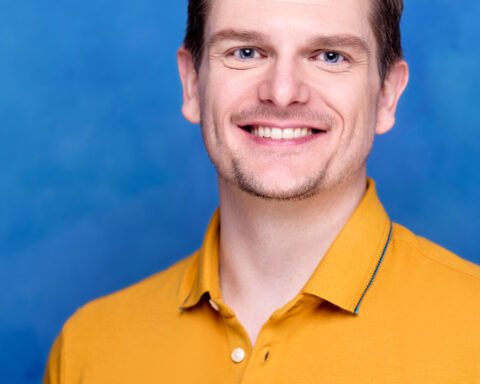
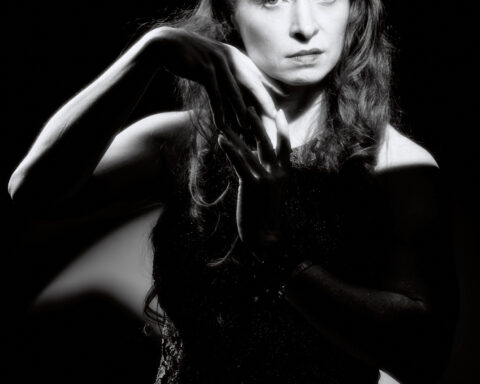

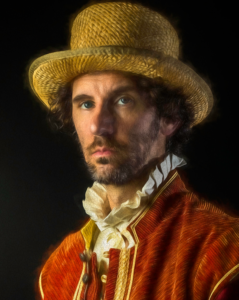


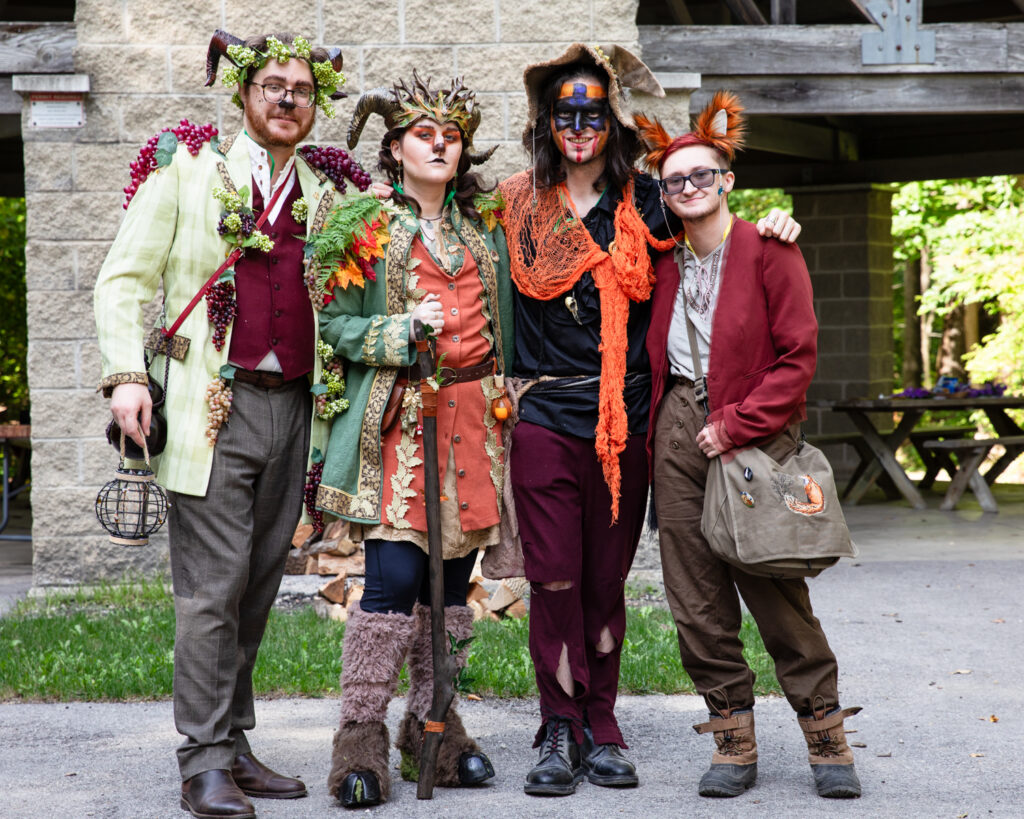
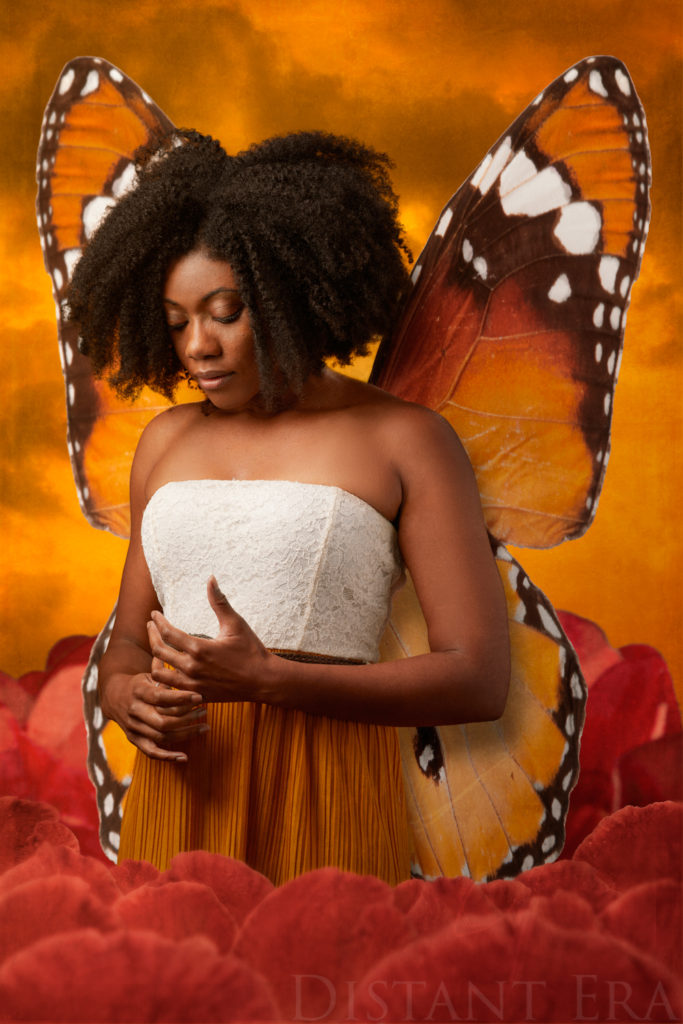

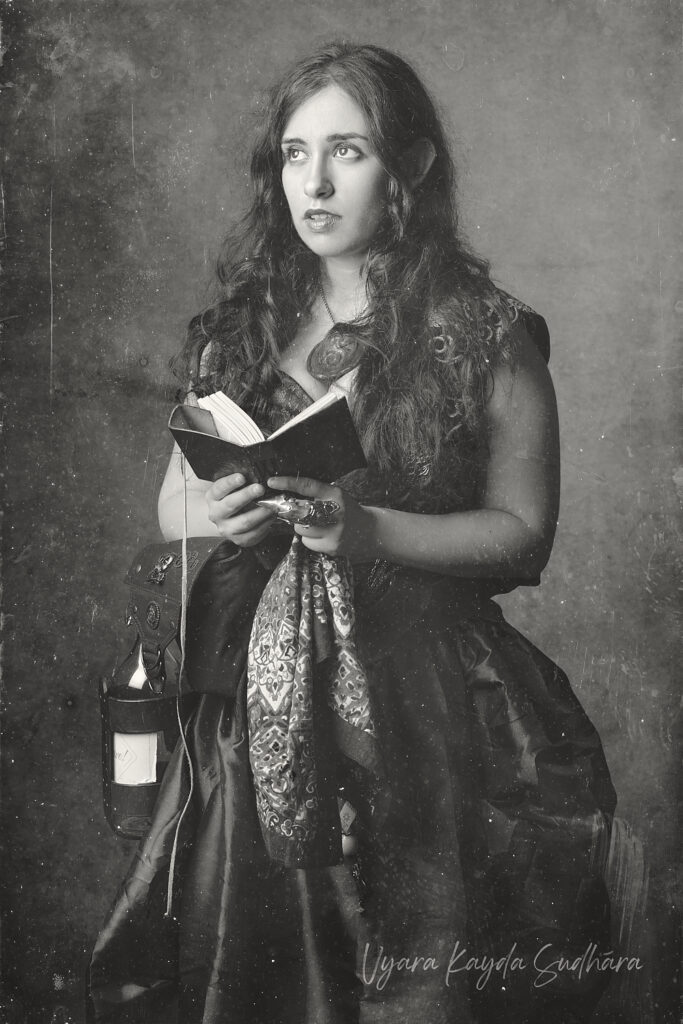
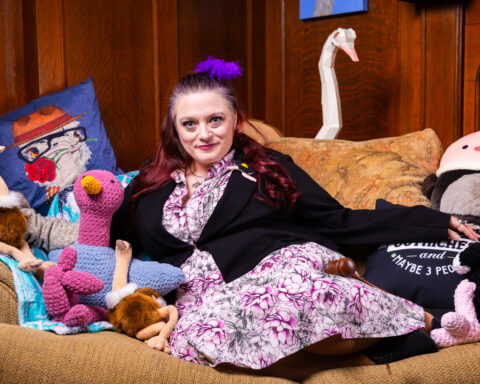


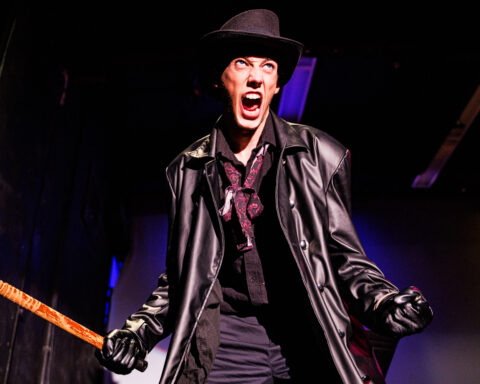
Follow Me